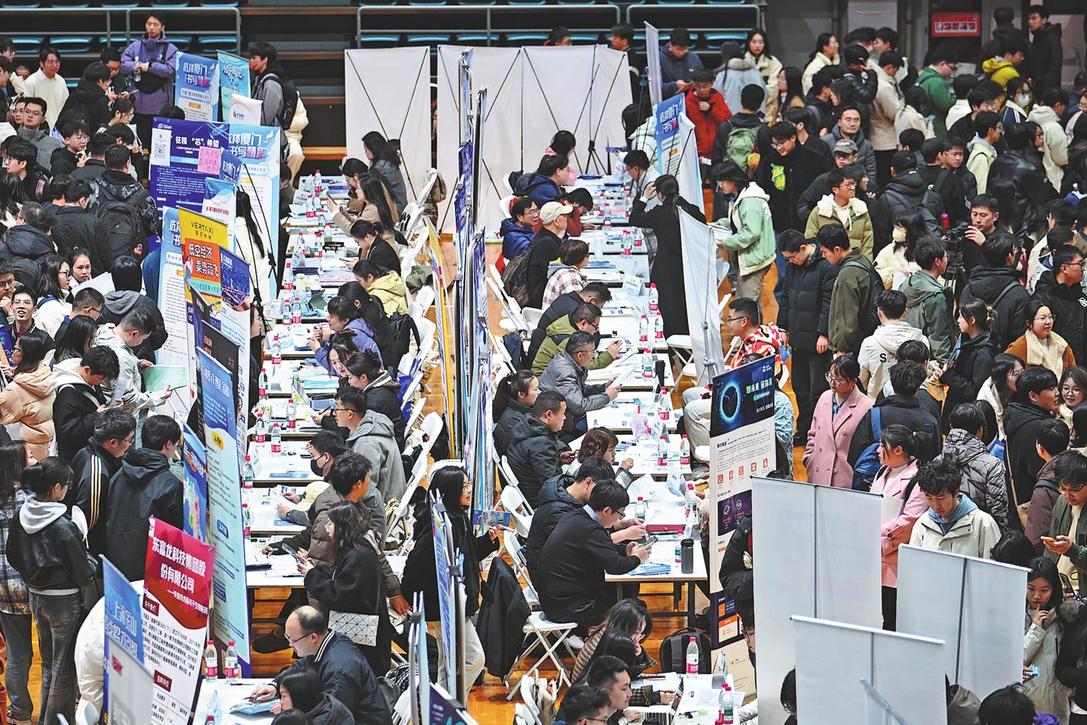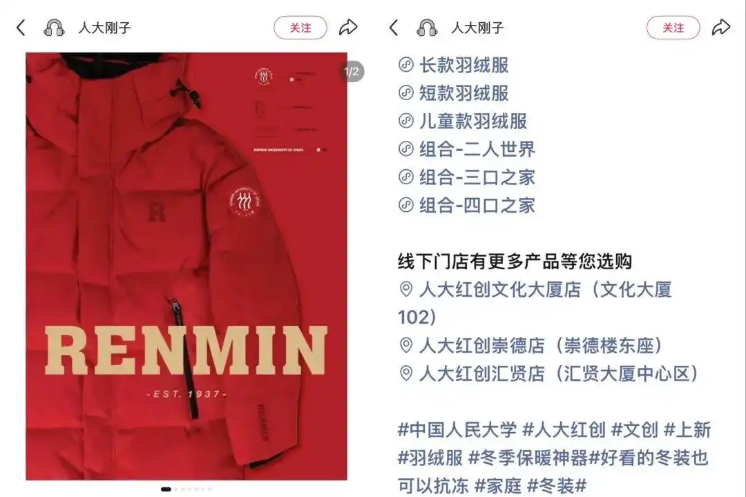'CULTURAL ICE CREAMS' CATER TO CRAVINGS FOR NATION'S RICH HISTORY
Featuring intricate design elements of storied past, ancient architecture, frozen treats go viral

Walking through the majestic Old Summer Palace in Beijing, most visitors feel a deep connection to history that is only possible in places steeped in such grandeur.
The sunlight falls on Fuhai Lake, and the air is thick with the scent of willow trees, blending with the subtle fragrance of lotus flowers floating on the water.
But what if you could capture this essence? Hold it in your hands, or even taste it?
Zheng Aonan, a designer known for blending cultural heritage with contemporary trends, believes the answer lies in the unlikely form of ice cream.
"When I was asked to design a line of ice cream products for the Old Summer Palace, the first image that came to mind, like many visitors, was the palace ruins and its picturesque gardens," Zheng recalled.
"But then, through my research, I discovered the annual lotus festival where hundreds of varieties of lotuses bloom across the scenic area."
Inspired by this, he created a series of lotus-shaped ice creams on a stick, with popular flavors like chocolate, vanilla, and strawberry. The design of the lotus ice cream was also inspired by the stone carvings found in the ruins.
Melting moments
In recent years, "cultural" and "creative" ice creams, which are offered at scenic spots, amusement parks, and museums, have become a much-loved social media trend. The ice creams, some handmade, usually feature decorative designs and special flavors and mainly range in price from 10 yuan to 30 yuan.
Holding one of the special ice creams and sharing a photo on social media has become a "must-do" activity for many visitors, that amplifies their cultural experience.
The lotus ice cream became a hit, and was one of Zheng's first cultural food creations. Nearly a decade later, Zheng, 41, has partnered with hundreds of domestic tourist attractions including the Terracotta Warriors in Xi'an, Shaanxi province, and the Mogao Grottoes in Dunhuang, Gansu province — designing over 1,000 culture-related ice creams.
"For me, each design is a form of 'cultural decoding'," Zheng said. "It's about choosing representative symbols — ones that are not only visually compelling, but also match the texture and quality of the ice cream itself.
"My goal is always to create an experience that leaves a lasting impression on visitors, whether they're at a museum or a scenic spot."
Zheng said there are three ways to represent cultural elements in creative ice creams. Iconic architecture and historical artifacts are two, and when there is no specific object, he uses image editing to craft a narrative that is transformed into a bas-relief or sculptural design.
"This approach lets the history or essence of a cultural symbol come to life in a visually stunning, edible form," he added.
Simply mimicking an iconic image, like a famous stone sculpture or artifact, isn't enough for Zheng.
"Ice cream is textured, moldable, and edible. So, the design must consider these qualities, while still capturing the essence of the symbol. Overly literal interpretations of cultural symbols might not work well. Sometimes, creative reimaginings are necessary to maintain both the authenticity and the fun of the product."
Originally from Jinan, Shandong province, Zheng graduated from Shandong University of Art and Design in 2007. His career began in contemporary art and space design, but using ice cream as a medium was a new and exciting challenge for him.
One of his most memorable projects was creating ice cream for Baotu Spring, a scenic spot in Jinan, renowned for its bubbling, crystal-clear waters, and considered a symbol of the city.
Zheng said he has visited the scenic landmark countless times since he was a child. When he designed the ice cream, he tried to combine the image of the spring and the park with how he felt about them. "The design was centered on the natural purity of water — fresh and flowing — just like my memories of the spring," he said.
The ice cream was a hit with locals and visitors, and just as importantly, Zheng's family. "They were so proud of the product," he said.
Another of Zheng's popular creations is the West Lake ice cream in Hangzhou, Zhejiang province. The frozen treat was inspired by the Duanqiao (or Broken) Bridge, an iconic site tied to the Legend of the White Snake, a love story with supernatural elements.
The ice cream has two parts, each representing the story's main characters, Xu Xian and Bai Suzhen, who overcome great adversity to be together. The two sticks in the ice cream are united to represent the memorable reunion of the two lovers in the legend.
"The idea was to make the experience interactive, giving tourists a way to immerse themselves in the story," Zheng explained. "It's like when you plan a trip by reading travel guides — the most meaningful experiences are the ones that tourists themselves share. By understanding this, I can create ice creams that resonate with visitors and reflect the essence of a place."
Pretty as a picture
Lin Ying is a 38-year-old entrepreneur who has turned her passion for design and food into a thriving business at the Longmen Grottoes, a UNESCO World Heritage site in Luoyang, in Central China's Henan province.
Her peony-inspired ice cream cones have become a viral sensation. Each handmade creation features stunning depictions of peonies, with intricate petal details brought to life through soft pinks, vibrant oranges, and hints of gold — reminiscent of a blossoming flower.
These ornate ice cream cones have captured the imagination of young visitors and become a "must-try" treat for tourists visiting the region.
Holding one of the ice creams while posing in front of the ancient grottoes or amid peony flowers has become standard poses for visitors, with their photos often shared on social media platforms like Xiaohongshu (RedNote). The photos of the visually striking ice creams have gone viral, further fueling the buzz about Lin's work.
The demand for Lin's ice creams has been overwhelming, particularly during peak tourist seasons such as the annual Peony Culture Festival of Luoyang — which runs from mid-April to mid-May — and the May Day holiday. During these times, her shop sees brisk business with more than 600 ice creams sold in a single day.
"During our busiest times, the line stretches out the door of the shop," Lin said, describing demand during the peony festival.
Each ice cream is handmade, with Lin's team spending up to 10 minutes piping decorations of a single flower. The flavors vary, with most priced at around 25 yuan each, and are carefully crafted to suit young people's preferences.
"We adjust the sweetness based on research, as most younger people prefer a more subtle sweetness," she explained.
Born in Fujian province, Lin moved to Henan after marrying her husband 10 years ago. They first settled in Zhengzhou, before relocating to Luoyang six years ago.
Lin trained as an architect, and worked as a designer before she decided to change careers after settling in Luoyang.
"Desserts, like architecture, require craftsmanship. Both are forms of spatial art," Lin said, emphasizing how her architectural training has informed her approach to creating visually striking, yet delicious "cultural treats".
Her eye for detail and spatial design is evident in every one of her ice cream creations, from the Longmen Grotto-shaped cakes to the peony-patterned cookies and artistic sugar sculptures that decorate her shop.
Today, Lin oversees a growing product line, with six main categories and over 100 cultural and creative items, which include various sweets and handmade treats inspired by Luoyang's rich history.
"Luoyang's culture is rich and deeply rooted in history — it's something worth exploring and sharing," Lin proudly said. "But it's also important to present that culture in ways that speak to younger generations, especially in the digital age."
Lin's innovative approach aligns with a broader shift in contemporary tourism, as travelers seek more personalized, engaging, and sensory experiences, experts said.
Deeper connections
Niu Xiaoxia, deputy director of the operations management department of Jinan Culture and Tourism Development Group, believes that cultural and creative products, like Zheng's and Lin's ice creams, are helping to generate deeper connections between tourists and the destinations they visit.
"There's an increasing demand for deeper cultural engagement in tourism today. Unlike the mass-market tourism of the past, contemporary travelers want experiences that resonate with them on a personal level," said Niu.
"Cultural and creative productions play a significant role in this, fostering emotional resonance by tapping into shared cultural narratives, values, and histories. These elements help create a profound connection between the audience and the culture represented."
The Baotu Spring-themed ice cream launched on Jan 1, 2021 was the first ice cream to incorporate a scenic spot's intellectual property into its design, Niu said.
Within its first year, the Baotu Spring ice cream sold over 700,000 units, with daily sales peaking at over 5,000 on busy days. Despite launching in the winter months, it defied expectations by attracting significant attention and becoming a much-loved treat.
Niu said having an ice cream in winter was an unexpected and pleasant experience for many of the tourists. "It's a perfect example of how modern tourism is personalized and innovative, providing tourists with experiences that are both memorable and Instagram-worthy," he said.
During the May Day holiday this year, the Baotu Spring scenic area saw over 1.6 million visitors, marking a 10.57 percent year-on-year increase. The Baotu Spring section alone attracted 288,900 visitors, with 20,000 ice creams sold during the period.
Zheng's ice cream has become an iconic cultural product for the area, with many tourists considering it a must-try item.
"A trip to Baotu Spring is no longer complete without a photo of the visitor holding the iconic ice cream in front of the Guanlan Pavilion," Niu added.
"The fusion of culture, creativity, and marketing innovation has transformed the ice cream into a symbol of the place, offering visitors more than just a treat, but an unforgettable cultural experience."



Today's Top News
- UN envoy calls on Japan to retract Taiwan comments
- Innovation to give edge in frontier sectors
- Sanctions on Japan's former senior official announced
- Xi stresses importance of raising minors' moral standards
- Coordinated reform key to country's growth
- Shandong gives new life to traditions






























